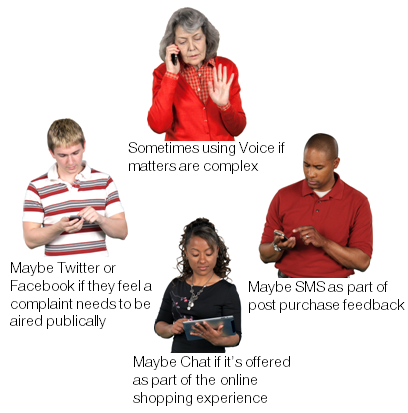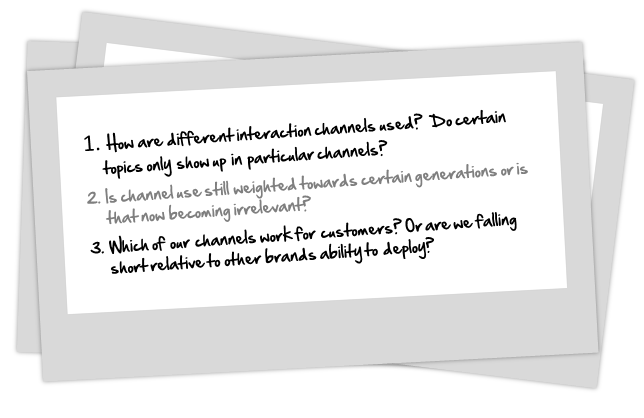
In this post, I want to explain how Interaction Analytics can play an important role in understanding and responding to omni-channel customer behaviour.
First let’s start with a few definitions. Just as ‘call centre’ gave way to ‘contact centre’ in recognition of all the communication channels being used by customers, the language of ‘multi-channel’ is now giving way to ‘omni-channel’.
Wikipedia defines omni-channel retailing as ‘very similar to, and an evolution of, multi-channel retailing, but is concentrated more on a seamless approach to the consumer experience through all available shopping channels‘.
You might have started to notice the difference yourself. ‘Buy On Line, Collect In Store’ is a service more and more retailers are able to offer. Getting their act together has resulted in many commentators praising online retailers for delivering a much improved customer experience during the 2012 end of year sales period.
Yet the challenges remain significant.
Retail Leads The Way In Next Generation Customer Experience
For instance, a recent IBM global study of 26,000 consumers claimed nearly half of all online retail purchasers were now ‘Showroomers’. In other words, consumers who shopped in the store but then purchased online – sometimes from a different retailer.
That’s a very frightening fact for any retailer still stuck in the multi-channel generation!
And while the Retail sector is feeling the heat right now, this new generation of customer expectation is bound to cross over into other markets. We live in fast changing times. Spotting these new forms of customer behaviour is challenging enough. Then understanding how well we are delivering against any new expectations is even more so.
So How Can Interaction Analytics Help?
Although most deployments of Interaction Analytics currently concentrate on the voice channel, I’m pretty sure the arrival of this ‘omni-channel’ trend will change things. As customers expect to move seamlessly between store, online and catalogue – using a mix of screens from mobile to laptop to TV – they will no doubt flip between interaction channels. In the US for instance, cross-channel shopping journeys involving mobile devices are up 20% on a year earlier according to this study.
Since the omni-channel phenomena is new, so too is this need for an analytics toolkit that can stretch across all forms of voice and text channels. I can imagine the ability to compare and correlate customer insight by channel will grow in importance.
Remember the context for this. Customers are expecting brands to execute an immediate transformation into omni-channel capability. They always want it now! The trouble with that is what they want is logistically complex and takes time to deliver. Even for the most accomplished brands.
Therefore, this expectation will not be met in a perfect way. In an already tough economic climate, the last thing any brand needs is publically disgruntled customers.
So what is to be done?
The only way to minimise the degree of damage to the customer experience is to improve responsiveness by aiming to spot and fix those imperfections in as near real time as we can. And if we can’t fix it immediately, there is plenty of evidence that being fast to acknowledge shortfalls plays well to customer sentiment.
So to plug those likely gaps in providing a seamless customer experience, we will need to scan across all interaction channels. Since hints of those ‘imperfections’ can be left anywhere.
Doing It For Real
In practice you will probably want to iterate around a set of core questions that keep up with changing customer behaviour. Here are a few of the more obvious questions you will want answers to:
Outside the immediate challenge of providing a tactical response to those type of questions, there are equally important insights to surface and act on. These are more strategic. For instance:
In other words, you build a framework of questions that provides the level of responsiveness needed to protect your brand. Interaction Analytics then does the heavy lifting.
The Final Point
Today’s consumer is omni-channel and so it is important to have an analytics capability that matched this behaviour.






